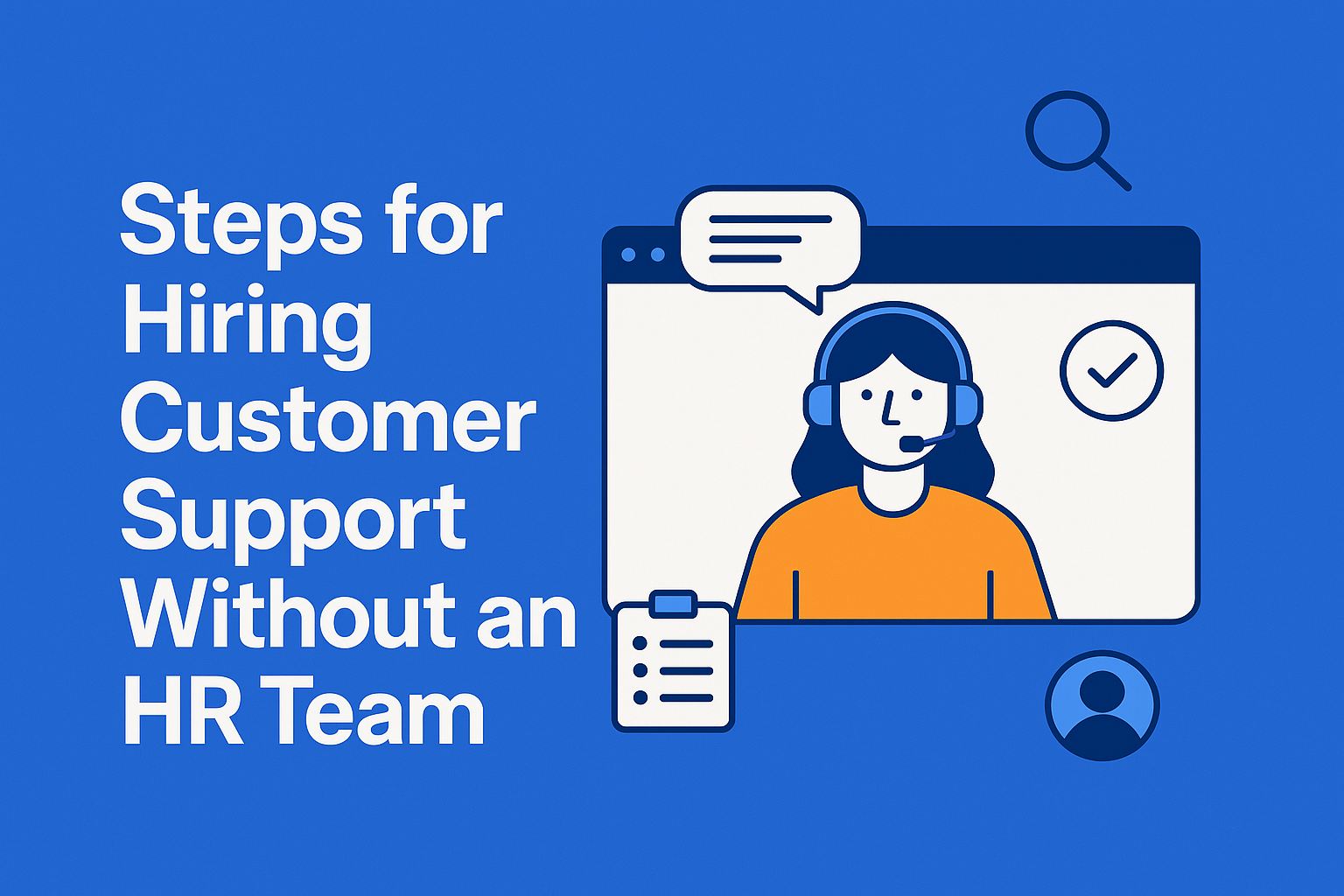How Startups Successfully Hire Customer Support Without an HR Team

Hiring customer support reps might sound like a job for a full-blown HR team. But for most early-stage startups, that luxury doesn’t exist. Resources are tight, headcounts are lean, and speed is everything. The good news? Some of the best customer service teams in fast-growing startups were built without any in-house recruiter at all.
In this guide, we’ll walk you through exactly how startups successfully hire customer support without HR, from sourcing the right talent to onboarding quickly and scaling without overhead. Whether you're bootstrapped or VC-backed, this blog will help you build a cost-effective, high-performing support team.
Table of Contents
- Why Startups Can’t Wait to Hire Customer Support
- When to Make Your First Support Hire
- Steps for Hiring Customer Support Without an HR Team
- Final Thoughts
Why Startups Can’t Wait to Hire Customer Support
Startups often wait too long to hire support. The founders or product team end up replying to customer queries, which leads to burnout, slow responses, and missed opportunities to build brand loyalty.
But hiring support early has real benefits:
- Increased conversions: Faster answers = fewer abandoned carts.
- Higher retention: Better support builds trust and reduces churn.
- More focus: Founders can focus on growth instead of chasing support tickets.
You don’t need an HR department to make that happen. What you need is a lean, fast, and smart customer service hiring process.
Step 1: Define What You Need (And What You Don’t)
Startups often try to hire a customer support rep who can do everything.
- Talk to customers
- Run CRM workflows
- Do logistics coordination
- Manage reviews
- Be available 24/7
This is unrealistic. Instead, define:
- Shift coverage: Do you need coverage during U.S. hours? 24/7? Just weekends?
- Channel mix: Are you prioritizing live chat, email, or social DMs?
- Ticket type: Are most queries about product sizing, refunds, or technical bugs?
Create a lean job description focused on core tasks. Don’t try to cram in every possible duty.
Step 2: Source Talent Without an HR Team
There are four ways startups commonly find customer support talent without using a recruiter:
1. Job Boards Built for Remote Support
- Support Driven Jobs
- Remotive.io
- We Work Remotely
- Dynamite Jobs
- SupportHire
These sites attract customer-centric folks looking for startup roles.
2. Hiring Marketplaces with Pre-Vetted Agents
- Platforms like Upwork, Fiverr, SupportHire offer trained, AI-enabled agents
- You only pay for resolved tickets
- You get trained agents in no time.
This lets startups scale customer support without worrying about full-time commitments.
3. Freelancer Platforms
- Upwork and Freelancer can work if you’re looking for a part-time rep
- Be prepared to filter for quality, add assessments or a short trial
4. Referrals from Other Founders
- Founders you know have likely gone through the same thing
- Ask who they hired or which platforms worked best
Step 3: Skip the Resume. Test for Skills Instead.
Hiring without HR means cutting down on back-and-forth. The most effective method? Replace long interviews with async skill assessments.
Example test:
- "Here’s an angry email. How would you respond?"
- "You’re launching a new product. Draft a support reply for pre-launch inquiries."
- "Use this help doc to answer a tricky refund request."
You're testing:
- Tone and empathy
- Problem-solving
- Attention to detail
- Clarity in writing
This weeds out poor fits fast and gives a real-world preview of performance.
Step 4: Prioritize Attitude Over Experience
Plenty of startups make the mistake of looking only for candidates with prior e-commerce support or SaaS customer service experience. But that narrows the pool too much.
What actually matters:
- Empathy: Can they calm down a frustrated customer?
- Responsiveness: Do they show up on time and follow up?
- Coachability: Are they open to feedback?
- Written fluency: Especially for chat and email support
Some of the best reps come from hospitality, teaching, or retail, roles where people skills are tested daily.
Step 5: Onboard Fast with the Right Tools
You don’t need HR handbooks to onboard effectively. A few tools and templates go a long way:
Tools
- Help Desk Software: Gorgias, Zendesk, Freshdesk
- Internal Wiki: Notion, Slite, or Google Docs with SOPs
- Macros & Templates: Pre-written replies to common queries
- Loom or Scribe: For async walkthroughs of tools and workflows
What to Cover in Week 1
- Brand tone of voice
- Product catalog or features
- Escalation processes
- Response time expectations
Start with a small set of tasks and scale up weekly.
Step 6: Consider Flexible Hiring Models
Not every startup needs a full-time hire from Day 1.
Here are scalable hiring models:
- Part-time agents covering off-hours or weekends
- Shared agents through platforms like SupportHire
- Flexible pricing where you pay only for the work done
- Trial projects before committing to longer-term engagement
This lets you adjust as your volume grows without getting locked into fixed payroll.
Step 7: Keep Improving With Feedback Loops
Once your support hire is live, gather:
- Customer feedback: Review CSAT or NPS scores
- Team feedback: Are they escalating correctly? Communicating clearly?
- Ticket analytics: What are common queries? Can you automate them?
Your goal is to create a feedback loop where support continuously improves, even without someone managing performance full-time.
Final Thoughts
Startups don’t need a full HR stack to build a great customer support team. In fact, having fewer layers often leads to faster hiring, clearer communication, and better-fit talent.
The playbook is simple:
- Define your support needs
- Use async hiring methods
- Hire for attitude, not resume
- Onboard with clarity
- Stay flexible
And if you want to skip the sourcing, testing, and training altogether?
